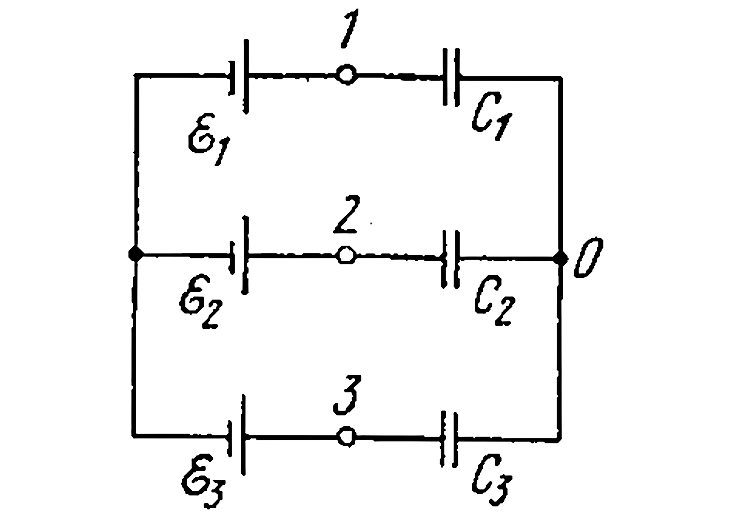For determining the value of potential at a point, the external force at every point of the path is to be equal and opposite to the:
Electrostatic force on the test charge at that point
Work done
Both (a) and (b)
Neither (a) nor (b)
The correct Answer is:A
Electrostatic force on the test charge at that point
Explanation: The external force at every point of the path is to be equal and opposite to the electrostatic force on the test charge at that point.
Topper's Solved these Questions
- BOOK - EDUCART PUBLICATIONCHAPTER - SAMPLE PAPER 3EXERCISE - SECNTION -C6videos
SAMPLE PAPER 3
- BOOK - EDUCART PUBLICATIONCHAPTER - SAMPLE PAPER 3EXERCISE - SECNTION -C6videos
SAMPLE PAPER 3
- BOOK - EDUCART PUBLICATIONCHAPTER - SAMPLE PAPER 2EXERCISE - SECTION-C6videos
SAMPLE PAPER 2
- BOOK - EDUCART PUBLICATIONCHAPTER - SAMPLE PAPER 5EXERCISE - SECTION - C6videos
SAMPLE PAPER 5
Similar Questions
Knowledge Check
- Question 1 - Select One
In an equipotential surface, the value of potential at all points on the
AIs differentBis constantCmay be differentDmay be constant - Question 2 - Select One
In the given circuit the potential at point B is zero, the potential at points A and D will be
 AVA=4V,VD=9VBVA=3V,VD=4VCVA=9V,VD=3VDVA=4V,VD=3V
AVA=4V,VD=9VBVA=3V,VD=4VCVA=9V,VD=3VDVA=4V,VD=3V - Question 3 - Select One
At any point on the right bisector of line joining two equal and opposite charges
Athe electric field is zeroBthe electric potential is zeroCthe electric potential decreases with increasing distance from centreDthe electric field is perpendicular to the line joining the charges
Determine the potentials of point A and B with respect to earth
 View Solution
View SolutionDetermine the potential at point 1 of the circuit shown in Fig., assuming the potential at the point O to be equal to zero.

using the symmetry of the formula obtained, write the expressions for the potentials at points 2 and 3.View SolutionThe work done by the external forces on a system equals the change in
View SolutionWhen there are no external forces, shape of the liquid is determined by
View SolutionSTATEMENT-1 : Tension at every point in a string with mass at every cross section must be unequal , if the string is accelerating .
and
STATEMENT - 2 : If we draw free body diagram for any section of the string , net external force acting on the string has to be equal to product of its mass ( which is non- zero ) and its acceleration .View Solution

